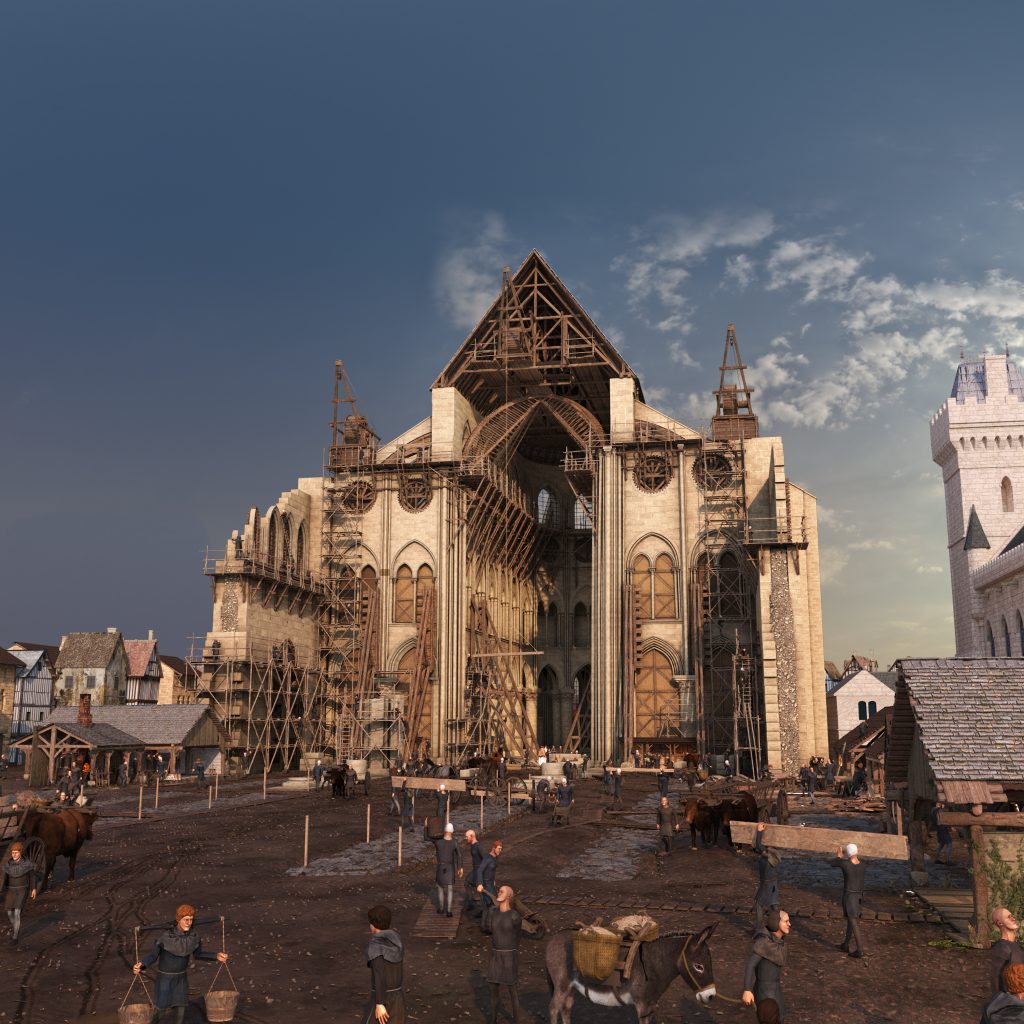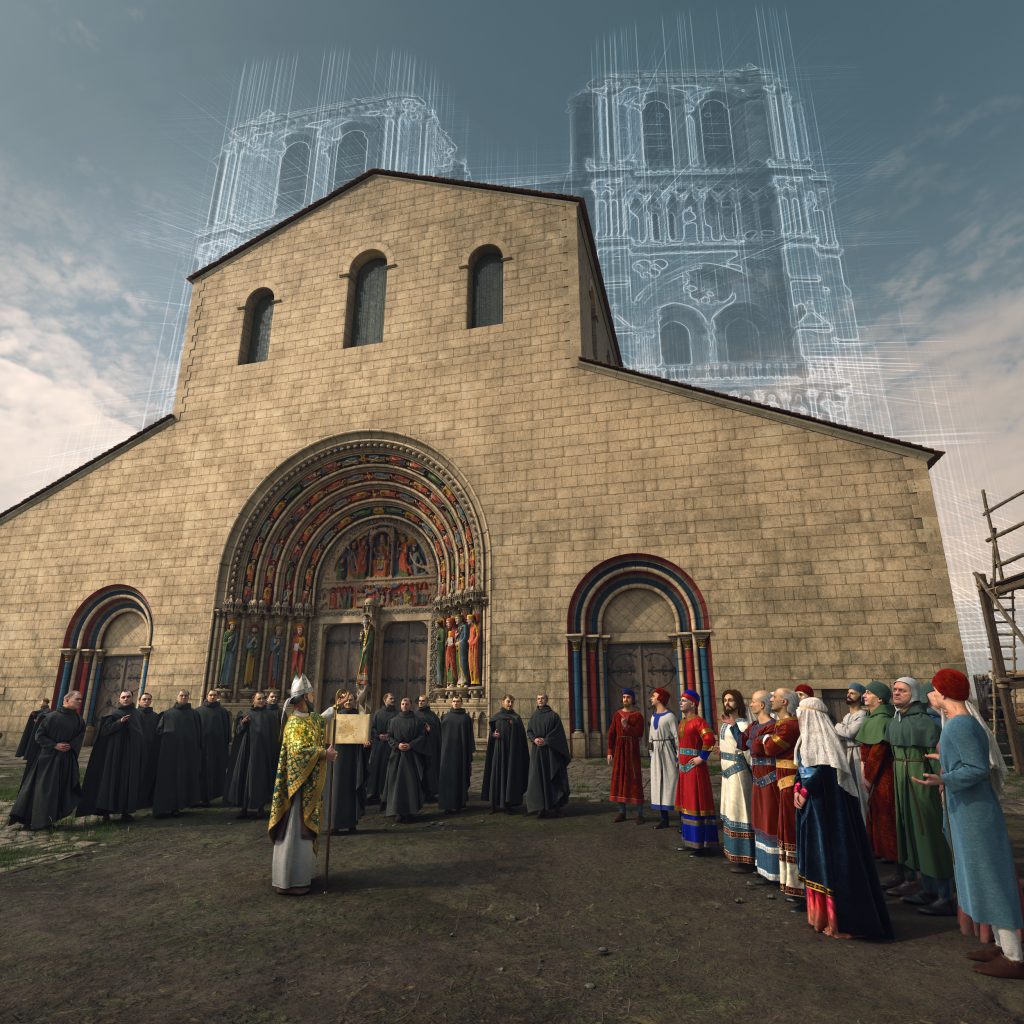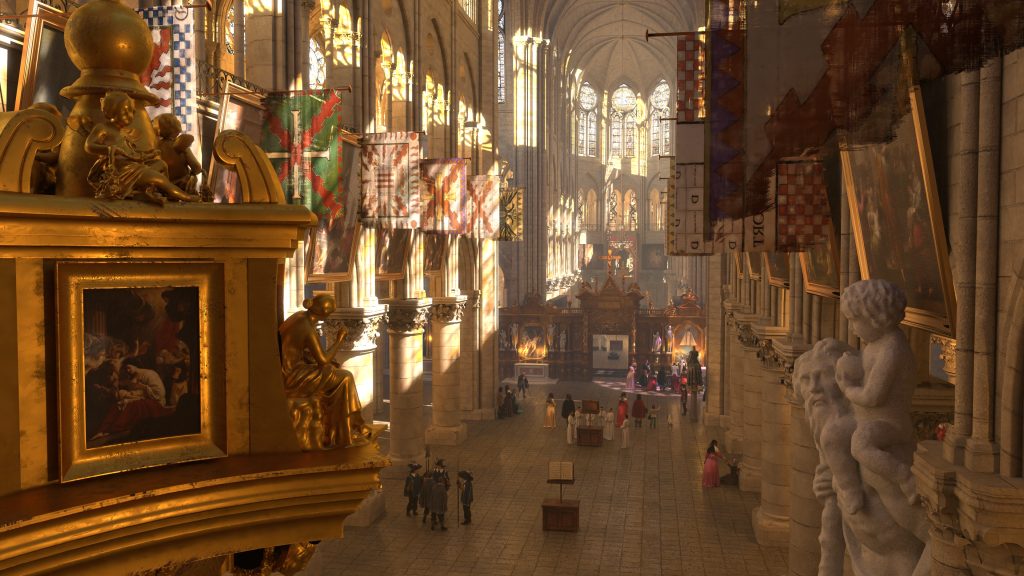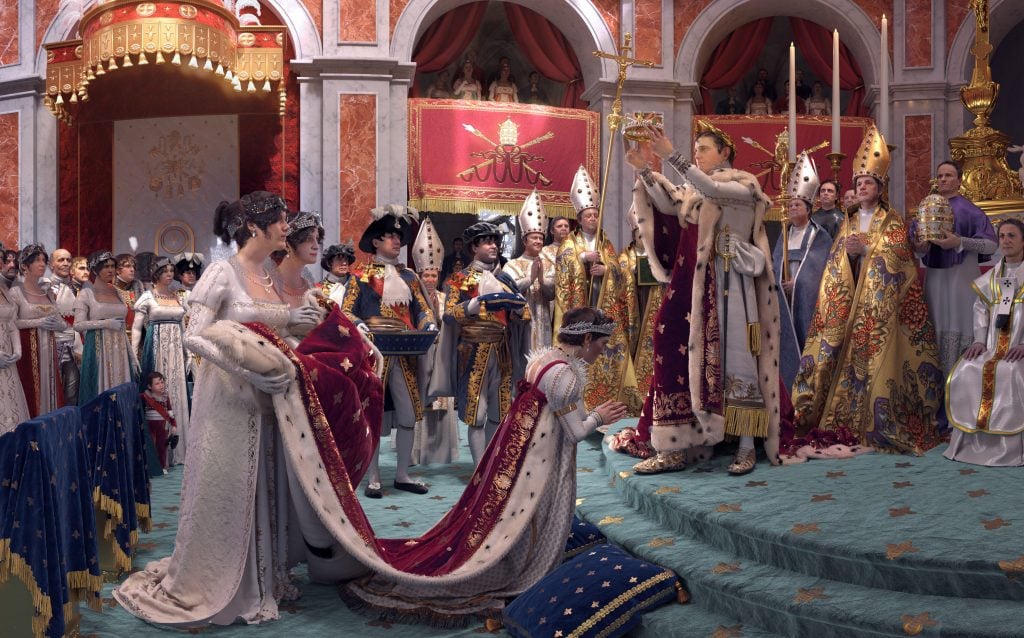
24 Nov A New Exhibition Plunges Visitors Into the History of Notre Dame, Thanks to Augmented Reality
Source Credit: Content and images from Artnet News. Read the original article - https://news.artnet.com/art-world/augmented-reality-experience-tracing-the-history-of-notre-dame-2573576
Saint John the Divine, the vast cathedral on Manhattan’s Upper West Side, knows a thing or two about the pitfalls of construction. More than 130 years on from breaking ground, it remains unfinished, its towers and steeple suspended as stunted stumps.

The construction of the gothic choir at Notre Dame in 1180. Photo: courtesy Histovery.
It is fitting then that the cathedral is hosting an exhibition on the birth, history, and rescue of its Parisian counterpart—Notre Dame—whose marathon five-year restoration is due to end in December. With El Greco and Cervantes looking on from the windows of the Spanish-themed St. James Chapel, the space uses illuminated photo panels, carpeting that copies the cathedral’s floor, and a full-size plaster cast chimera to draw out elements of Notre Dame.

The Notre Dame exhibit traces 850 years of the cathedral’s history. Photo: © Histovery.
“Notre-Dame de Paris: The Augmented Exhibition” is the product of Histovery, a French technology startup, and as its title suggests, the cathedral’s 850-year history is explored almost entirely through a digital tablet. By scanning rectangular blocks that mimic the gray limestone used for the cathedral, visitors are transported to carefully composed computer-generated scenes.

The fire that engulfed the cathedral in 2019. Photo: © Histovery.
First though, the exhibit turns back to the 2019 fire. There are videos of the first flames, the collapse of the spire (forceful enough to slam the doors shut), and the Paris fire brigade hauling away relics and furniture. It’s a reminder of just how close the cathedral came to complete disaster. Only the strength of the 800-year-old stone vaults prevented the spread of fire to the remainder of the structure.

A look at what would become Notre Dame, ca. 1160. Photo: © Histovery.
“Notre-Dame de Paris” then proceeds chronologically across more than a dozen scenes that look like those of a 2000s history computer game (heavy on the history, mind you, and light on the gaming). It starts on a muddy patch of Île de la Cité in 1163 with the laying of the cathedral’s cornerstone. Louis VII and his aristocratic donors are present, so too is Pope Alexander III, and Maurice de Sully, who rose from the peasantry to become the Bishop of Paris partly through his powers of oratory.

The holy relics enter Notre Dame, ca. 1241. Photo: courtesy Histovery.
The cathedral was intended to proclaim the supremacy of Paris, reaching a height greater than those of its regional rivals. Histovery introduces the blacksmiths, quarrymen, wood cutters, master craftsmen, and laborers who built the structure over the course of centuries. Limestone was hauled by barge and donkey from the city’s fifth and twelfth arrondissements and around 2,000 spears of oak from central France were required for the roof, a source French authorities have turned to for the cathedral’s reconstruction.

A view at what the cathedral would have looked like in ca. 1645. Photo: © Histovery.
By the 13th-century, Notre Dame’s towering nave (dramatically supported by flying buttresses) dominated the Parisian skyline. Louis IX sought out its spiritual sovereignty, spending half the annual budget to purchase the Crown of Thorns and a fragment of the cross from the indebted Byzantine empire. In 1239, the future saint walked barefoot in a procession that carried the crown into the cathedral.

The Imperial Coronation, 1804. Photo: © Histovery.
It continued a history of rulers using Notre Dame for political ends, one Louis XIII picked up in the 1600s by dedicating the kingdom to the Virgin Mary and adding a high altar. Most famous, was Napoleon’s coronation, a scene we enter through a meticulous recreation of the iconic painting by Jacques-Louis David from 1807 with seemingly every attendee a clickable source of information.
Today, it’s a symbol of Paris’s cultural rather than political or religious supremacy and the exhibition closes by returning to the drastic steps taken to “secure the monument”, ones that have made its December 7 reopening possible.
“Notre-Dame de Paris: The Augmented Exhibition” is on view at the Cathedral of Saint John the Divine, New York, through January 31, 2025
Source Credit: Content and images from Artnet News. Read the original article - https://news.artnet.com/art-world/augmented-reality-experience-tracing-the-history-of-notre-dame-2573576

